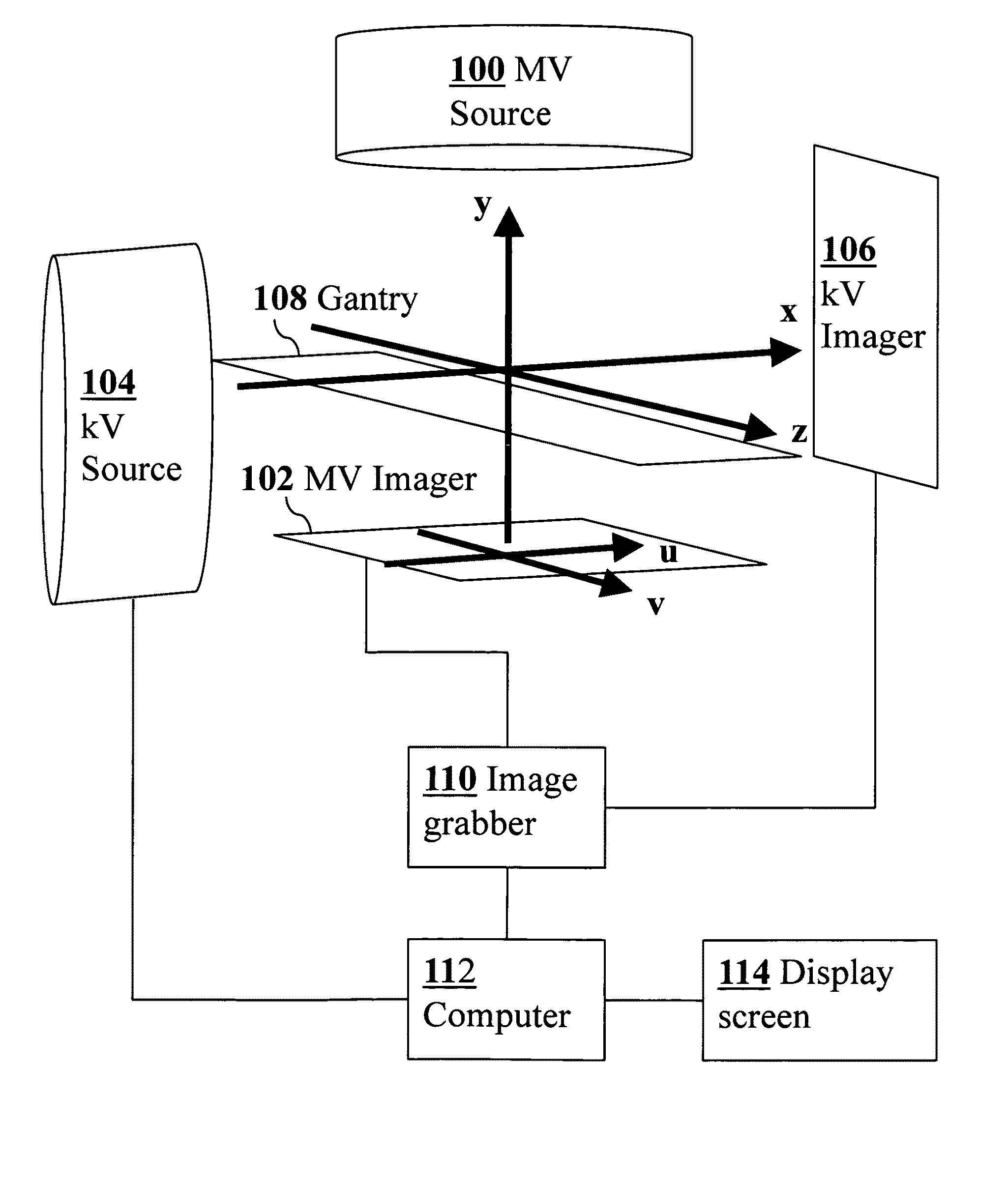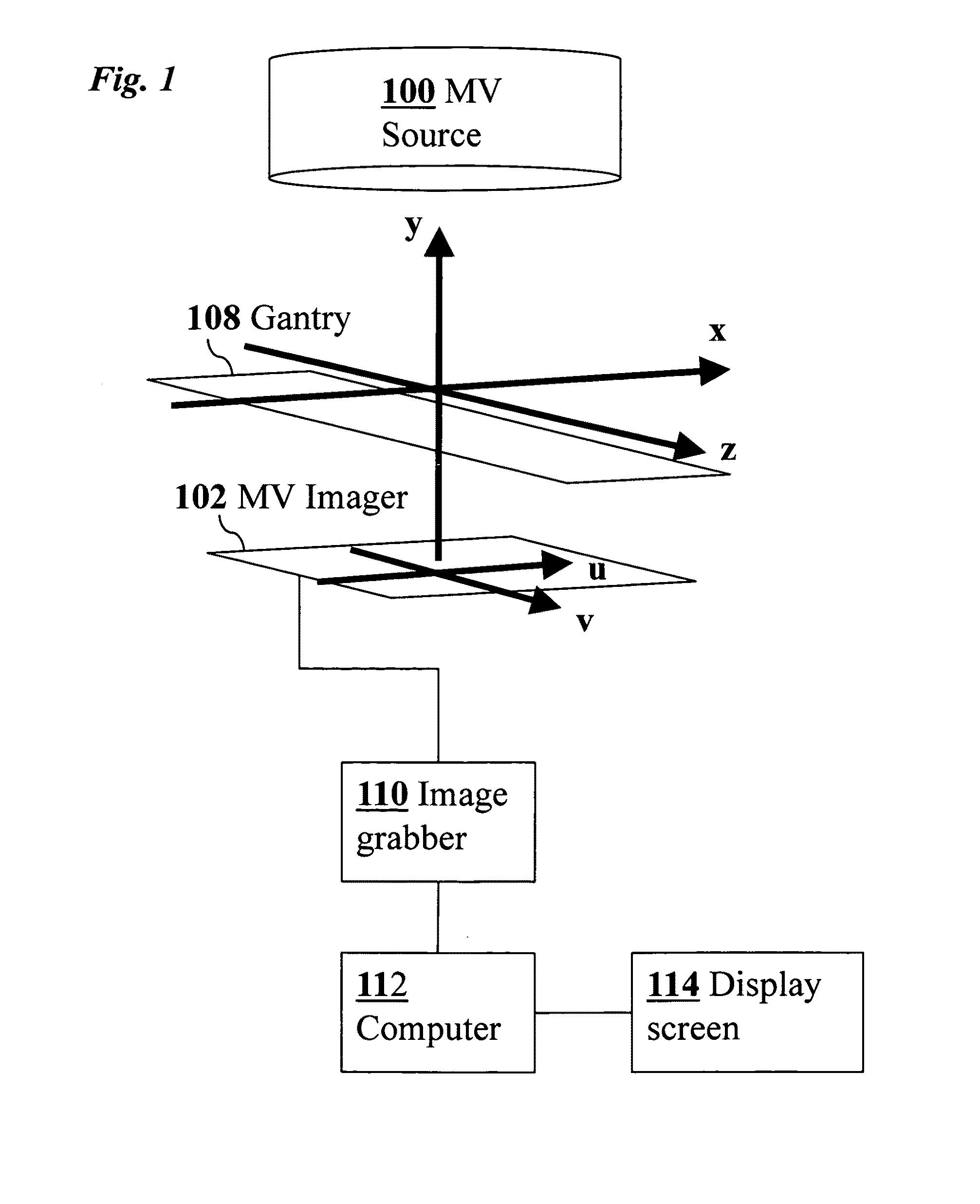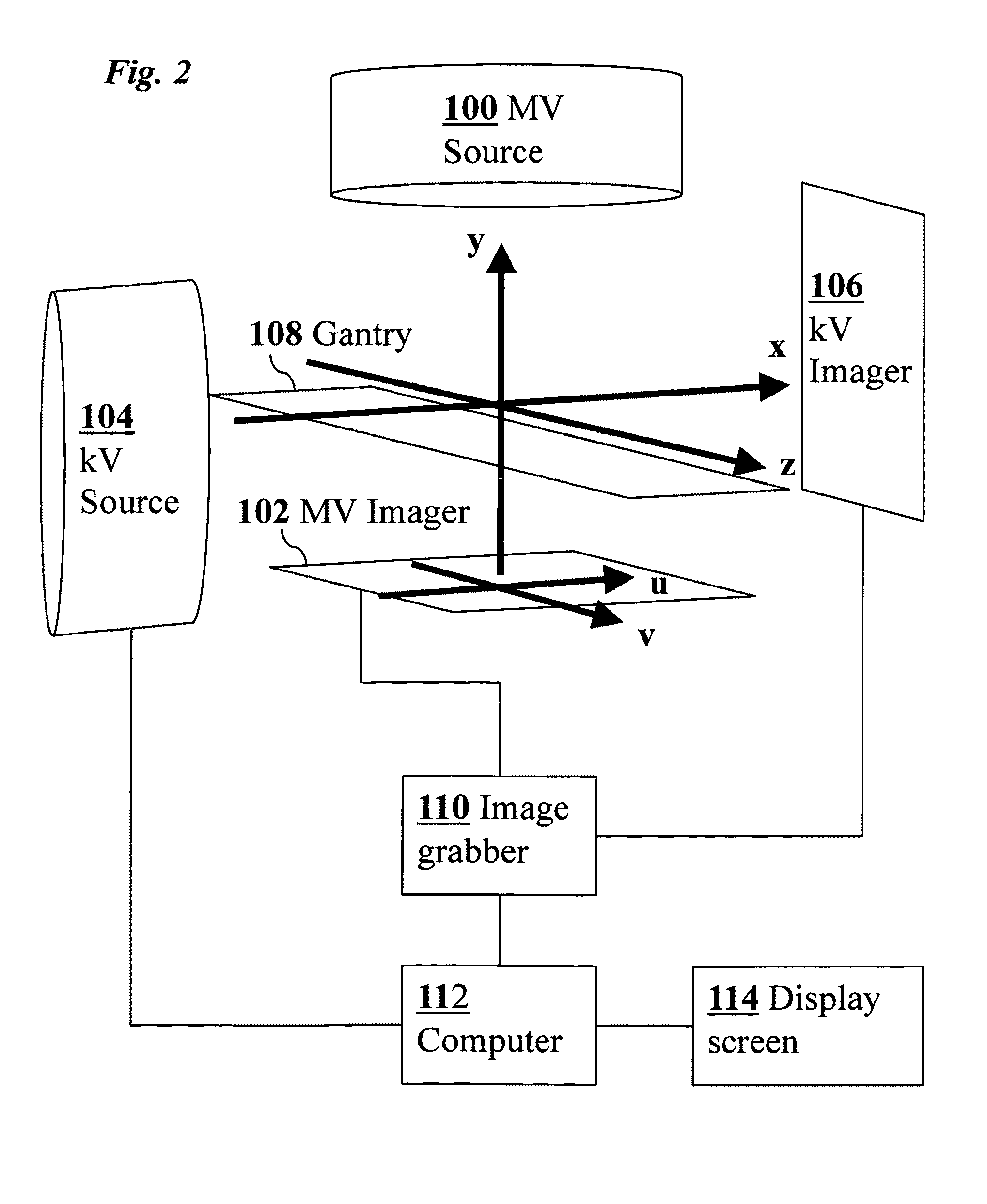Using a moving imaging system to monitor anatomical position as a function of time
a moving imaging and time-dependent technology, applied in the field of medical imaging, can solve the problems of affecting the assessment of magnetic resonance-based post-treatment assessment, affecting the accuracy of imaging results, and generating severe magnetic resonance imaging artifacts in the transponder, and achieve the effect of reducing the amount of imaging dos
- Summary
- Abstract
- Description
- Claims
- Application Information
AI Technical Summary
Benefits of technology
Problems solved by technology
Method used
Image
Examples
Embodiment Construction
[0030]In a preferred embodiment of the invention, techniques are provided for real-time position monitoring of anatomical position (e.g., prostate) through novel use of cine-megavoltage (MV) imaging, optionally combined with as-needed kilovoltage (kV) imaging. The techniques are especially valuable in the context of modern arc radiotherapy.
[0031]A commercially available radiotherapy system (e.g., Trilogy™, Varian Medical System, Palo Alto, Calif.) may be used to practice one embodiment of the invention. Successive MV treatment beam images were acquired during an arc radiotherapy delivery. Using the present and prior acquired images together with their known angular separation, a computational method was used to determine 3D fiducial locations as a function of time. The fiducial position information was updated at the rate of MV imaging frame rate. Each frame can be used in conjunction with the previous images to reconstruct the 3D fiducial position. From phantom studies the geometri...
PUM
 Login to View More
Login to View More Abstract
Description
Claims
Application Information
 Login to View More
Login to View More - R&D
- Intellectual Property
- Life Sciences
- Materials
- Tech Scout
- Unparalleled Data Quality
- Higher Quality Content
- 60% Fewer Hallucinations
Browse by: Latest US Patents, China's latest patents, Technical Efficacy Thesaurus, Application Domain, Technology Topic, Popular Technical Reports.
© 2025 PatSnap. All rights reserved.Legal|Privacy policy|Modern Slavery Act Transparency Statement|Sitemap|About US| Contact US: help@patsnap.com



